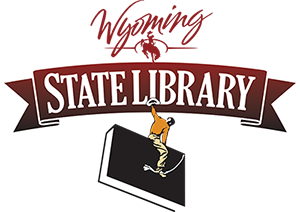Pamela Mejia de Rodriguez
Regional Early Literacy Specialist at Colorado State Library
Reposted from Colorado Virtual Library
“Gallina=chicken, puerta=door, ventana=window y pluma=pen”
Those are words of a traditional rhyme back in my country. Even though I didn’t know English when I learned that song, I was probably around 3 years old, I knew the letters of that song to perfection.
Music is recognized as a universal feature of human cognition: every healthy human is born with the ability to appreciate it.
Spoken language is introduced to the child as a vocal performance, and children attend to its musical features first. Without the ability to hear musically, it would be impossible to learn to speak.
Songs are a natural way to learn about language. They develop listening skills and slow down language so children can hear the different sounds in words, a key decoding skill.
Songs have repetitions and repletion is key when it comes to language development. It helps them to learn new words and information, strengthens their memory and attention.
How does singing with children help them get ready to read? (Extracted from Every Child Ready to Read)
Print Motivation
Children love singing. A great option to encourage not only reading, but also singing, is to read books that can be sung. These can include nursery rhymes, books that promote singing, or books that can be sung to a specific tune.
Print Awareness
A foundational early literacy skill is understanding that print has meaning. To help children make this connection, print out lyrics to favorite songs or read books that can be sung.
Letter Knowledge
Letter knowledge is, at its base, a shape recognition skill, so any rhyme or song that talks about how things are the same and different can help build skills children will need to identify letters. Of course, the ABC Song helps them learn letter names and alphabetical order!
Vocabulary
Just like books, songs have great vocabulary words, such as “tuffet” or “In a cavern, in a canyon.” Hearing new words in context helps children build their vocabularies. In addition, songs have a long tradition of being used as memory boosters! I’m sure many of you can still recite all 50 states because of a song you learned.
Phonological Awareness
Listening to and singing songs is one of the best ways for children to build their phonological awareness because often each syllable of a word connects to a note. In addition, many songs and rhymes have rhyming words. Both pieces help children hear the individual parts of each word.
Narrative Skills
Many Mother Goose and other childhood songs are little stories, and listening to them helps children learn about story structure and sequencing. Even silly songs like “Little Bunny Foo Foo” have a beginning, a problem in the middle, and a resolution at the end. When children sing these songs, they become storytellers.
Singing activities to do with your child (Extracted from Earlier is Easier)
Birth-8 month
- Sing while changing your baby’s diapers.
- Sing in the car! Hearing songs and stories will help baby learn how to communicate and soon they’ll respond!
- Move, gently bounce, or hold your baby’s hand as you dance together to music.
- Rhyming and bouncing songs help babies hear and feel words and sounds so they can begin to repeat them.
- Put your baby on your lap or on a blanket on the floor and look into their eyes as you sing. Tap their hands together to the beat.
- Sing a quiet, calming song before your baby goes to sleep. How about “Twinkle Twinkle Little Star” or “Hush Little Baby?”
9-18 Month
- Young children love to sing, so sing everywhere – in the car, in the bathtub, at the store and at the table.
- Make music with things you have in the house – pots, pans, spoons, boxes, cups. Crawl around on the floor with your child to the beat of the music.
- Songs have a note for each part of a word, so when you sing you’re helping your child hear that words have smaller parts. Clap or tap along to better hear these smaller parts.
- Sing the same quiet song at bedtime. Repetition and routine is good for young children and they will know it’s time for sleep.
- Sing a song you remember learning as a child. A song that was special to you can become special to your child too!
19-36 Month
- The tune of “Here We Go Round the Mulberry Bush” is great for singing about your daily activities. “This is the way we brush our teeth, brush our teeth, brush our teeth. This is the way we brush our teeth so early in the morning.” (Don’t know the tune? Listen here.)
- Sing the ABC song!
- Take a song you know and change the words to something silly. Include your child’s name.
- Sing a familiar song faster…and then faster…and then slower…and slower.
- Visit your local library and borrow some kids’ music cds to sing along with in the car.

 By
By